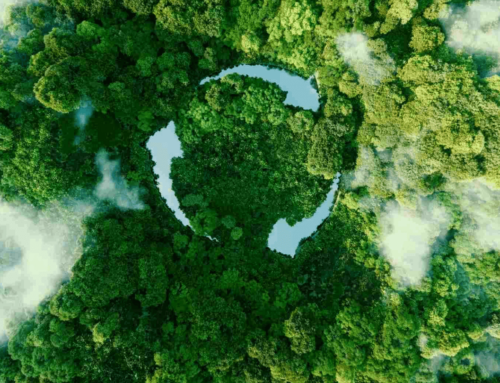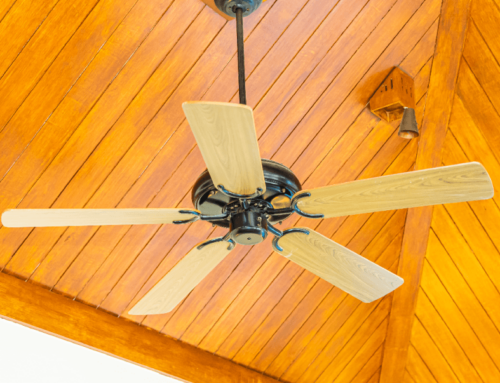Differences Between Offshore & Onshore Wind Energy
Using the wind for energy isn’t a new idea by any means. People have been utilizing the incredible power of the wind for centuries. Today, wind power is accelerating, delivering growing percentages of electricity generation year over year.In fact, the overall capacity of all wind turbines installed worldwide by the end of 2018 reached 597 Gigawatt, according to recent statistics published by World Wind Energy Association (WWEA), which is enough to cover close to 6% of the global electricity demand.
Wind farms can be based onshore (on land) or offshore (sea or freshwater), with key differences between the two. Traditionally, onshore wind turbines solely dominated the market, until the first offshore wind turbine was installed in 1991 off of the coast of Denmark. Onshore wind power refers to turbines that are located on land and use wind to generate electricity. Offshore wind power is when wind over open water (typically the ocean) is used to generate electricity.
In this post, we’ll discuss the characteristics of both offshore wind energy and onshore wind energy so that you can understand the differences between the two, as well as the pros and cons of each.
What Are Onshore Wind Farms?
Onshore wind farms require a strategic land location to optimize the amount of wind captured from a single direction. Wind moving across the land pushes toward the ocean but doesn’t maintain a straight course across the varying landscapes and weather patterns. Wind turbine construction on land attempts to predict the most common patterns and speeds in a given area for optimal efficiency.
The turbine blades must rotate at a consistent speed to create the necessary energy transfer. As the blades rotate, energy moves first to a generator and then to voltage cables. The energy transfers to a substation for final conversion into usable electricity before distribution.
Advantages
- Onshore wind farms are typically located in areas where there is low conservation or habitat value.
- The infrastructure necessary to transmit electricity from onshore turbines is considerably less than of offshore since there is less voltage drop between the wind turbine and the consumer.
- Onshore wind turbines are very quick to install. Because of the ease in installation, transportation, and other factors affecting capital cost, onshore wind farms are less expensive than offshore wind farms.
- Onshore wind turbines don’t negatively impact the environment around them and energy transportation produces fewer emissions. These turbines don’t release toxins or contaminate the land as they co-exist with farming efforts and wildlife.
- Additionally, thanks to its proven technology and reduced wear and tear (the moisture available in the area of the installation onshore wind turbines have very low erosion), maintenance costs are also lower than offshore wind farms.
Disadvantages
- People complain that wind turbines are an eyesore and also noisy.
- Onshore wind speeds are not as predictable as offshore wind speeds. Similarly, onshore wind direction changes more frequently. Since turbines are optimized at a specific speed, this can limit their efficiency.
- Land availability and landscape considerations limit onshore wind farms.
What Are Offshore Winds?
While offshore wind farms are growing in popularity, most are currently in Europe. The United States still relies heavily on onshore options. This balance is beginning to shift as technology and research make offshore options more feasible. Offshore wind farms are typically at some distance from land, in a shallow body of water. The farms are often in ocean environments, but offshore sites can also be lakes and other large bodies of fresh water.
Are offshore wind farms a better option than onshore? The maximum wind force is far more predictable offshore since there’s nothing to disrupt its path toward land. This predictability facilitates drawing more significant amounts of energy from the surrounding environment.
How do offshore turbines work? Offshore turbines function similarly to their onshore counterparts by collecting wind energy and transferring it via the turbine’s shaft to generators for conversion. However, offshore turbines require much more maintenance and upkeep because of the different environment. The transfer process takes longer and requires more equipment to distribute electricity to onshore substations.
Let’s examine the advantages and disadvantages in greater detail.
Advantages
- Offshore wind farms are constructed in bodies of water where higher wind speeds are available.
- Offshore wind speeds tend to be faster meaning more energy can be generated. There are no physical restrictions such as hills or buildings that could block the wind flow.
- Offshore wind speeds and direction are also steadier and therefore provide a more reliable and efficient source of energy.
- Offshore wind turbines can be built much larger and taller than their onshore counterparts, allowing for more energy collection.
Disadvantages
- Due to the larger structures and complex logistics of installing the towers, offshore wind farms are capital-intensive and are considerably more expensive to build than onshore wind farms
- Usually, offshore turbines cost 20% more, and towers and foundations cost more than 2.5 times the price for a project of similar size onshore
- The costs of offshore foundations, construction, installations, and grid connection are also significantly higher than for onshore
- Once the facility is built, operations and maintenance costs are also much higher for offshore facilities. This is attributed to the fact that:
- Despite the efforts taken to minimize the impacts of corrosion, seawater causes additional maintenance needs that aren’t required for onshore turbines. Offshore wind turbines also endure more wear and tear from waves and higher wind speeds than onshore turbines
- Any turbine maintenance at an offshore facility is a major undertaking that involves a helicopter full of highly trained technicians, and any major maintenance requires the rental of a highly expensive jack-up rig
- Because they tend to be far out at sea, offshore wind farms tend to have little to no visual (or noise) impact to humans, so the “not in my backyard” argument cannot be used
- Offshore wind farms do not interfere with land use
- Offshore wind could even benefit marine ecosystems. In fact, studies indicate that offshore wind farms protect sea life by restricting access to certain waters and increasing artificial habitats
The Future of Wind Energy
Whether wind turbines are onshore or offshore, they are quick to install, especially when compared to other energy sources. Wind energy has proven itself as a key player in providing energy to the public. It will continue to be an integral part of the energy conversation for as long as there is an argument on onshore vs offshore wind turbines. As wind power becomes an increasingly popular renewable energy source, researchers anticipate significant improvements in both onshore and offshore wind technology.
If you’re curious about how you can support the wind industry, then you may want to speak to one of our representatives about our enrolling in an electricity plan or give us a call






